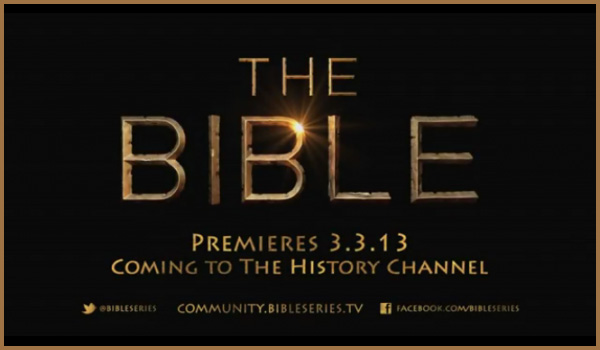Bible documentaries tend to skew toward the fringe in order to get a high viewership: I have seen documentaries that argue that Ezekiel’s wheel was a UFO, and that Jesus performed his miracles using David Blaine-style street magic. So I was wary about the History Channel’s new, much-hyped mini-series “The Bible.” Shortly before the show premiered this past Sunday, however, I read a Christianity Today interview with the producers—Roma Downey from “Touched by an Angel” and her husband Mark Burnett, the man behind “Survivor.” They talked competently about the Bible and said a team of forty theologians consulted on the script. I thought the series might prove my cynicism wrong.
It did not. The first episode was disappointing both because of the quality of the show itself and because of what it says about the kind of bland theology that attracts evangelicals.
The two-hour premiere divided its time between the stories of Abraham and Moses. They both seemed rushed. Rather than a real movie, it felt like an executive summary of one. We saw a few random scenes from the Abraham and Moses stories which barely established the plot, did not go into any depth, and were strung together with tenuous narration. It is obvious why this happened: forty minutes per story was not enough. The time span was exactly wrong—too short to develop a decent story but long enough to be awkward.
There were also several ill-advised attempts to spice up the action. The most obvious was the angel who looked suspiciously like Jet Li. His epic sword battle with the residents of Sodom prompted Twitter to buzz about “ninja angels.” The previews of coming episodes hint that the show has also tried to make Jesus more marketable. I was hoping he would look like a first-century Jew—olive complexion and short-cropped dark hair. Instead, his lily skin and chestnut locks make him look like he stepped out of an Anglican stained glass window. Oh, and both Abraham and Moses get into knife fights.
The marketing got even more awkward during the commercial breaks, which were dominated by recurring ads from Walmart and the “Christian Mingle” dating site. Do not get me wrong: I like everyday low prices as much as the next guy, but it is disconcerting to hear that “The Bible is brought to you in part by Walmart.”
The most significant problem, however, was the portrayal of Abraham and Moses. Neither seemed to have flaws. Although the show mentions that Abraham had an illicit relationship with Hagar and that Moses killed the Egyptian, it downplays their moral culpability. The focus is instead on the fact that both characters were excellent at trusting God. It is not a stretch to say this is the only significant facet of either character—they trusted God.
These shallow protagonists led to a watered-down message. The actual Bible reminds us that Abraham and Moses had plenty of flaws. Abraham told Pharaoh that Sara was his sister because he was terrified of Pharaoh. Moses tried to convince God not to choose him at the burning bush because he was self-conscious about stuttering. These details remind us that the main factor in the stories is God’s faithfulness, which holds even when his people stumble. What the show leaves us with, however, is a mass-produced catchphrase—if I trust blindly enough, then God will give me what I want.
“The Bible” premiere was a massive ratings hit for the History Channel. Many Christians will be able to enjoy the show—rushed pace and all—and be enriched despite the bland theological message. They would likely tell me that I should lighten up and let people enjoy a television show. So what if it’s a money-grabbing appeal to the lowest denominator? Isn’t that what mass media does?
Maybe they’re right. But it’s important to note that “The Bible” was marketed almost exclusively to evangelicals. And the way the producers thought they could get the best ratings was to feed us evangelicals an easily digested moral platitude. Apparently, the way to our hearts (and wallets) is through the bland and the generic.













